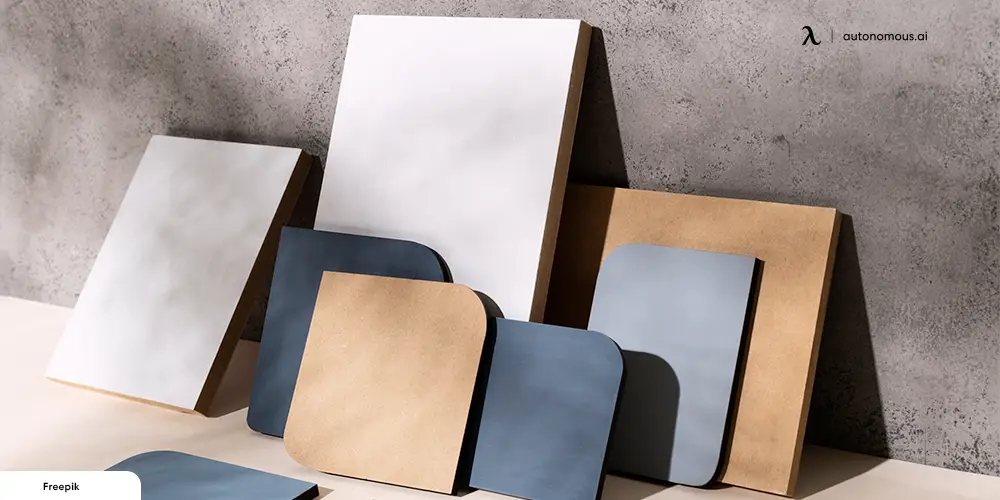
If you shop for furniture, you may be familiar with MDF or particle boards. However, such materials do not form structural components of the furniture. In recent years, particle board and MDF have been used in furniture production to reduce prices. You should not use either of them considering a minimum lifespan of three years since neither are strength-bearing materials. For this reason, most people switch to plywood instead. The cost of ply is approximately the same as a particle board. However, it is termite- and weather-proof. However, it can be heavy as well as deteriorate over time. It all boils down to the cost and use of the furniture you plan to purchase to decide which one is better - MDF board vs. particle board?
What is MDF?
Wood fibers make the Medium Density FiberBoard, which is made of medium density fiber. Wood fibers and resin are combined to make this composite board. Compressing wood fibers and resin with a hot press makes material like paper. It results in a solid board that will serve many purposes. MDF is one type of fiberboard, but there are additionally two kinds of fiberboard. This MDF vs. particle board type include:
- LDF - low density fiberboard
- HDF - high density fiberboard
Each board goes through the same process, but the difference between MDF and particle board is that each board uses a different amount of material. As you use more material to make a board, its density will also increase. For example, you can use plywood in place of MDF. MDF is more expensive than plywood. Therefore, you can make do with MDF instead of plywood if you have a tight budget.
Unlike particle board, MDF board is a dense, strong engineered wood composite similar to particle board in appearance. Due to its composition of such small wood fibers, MDF does not have any wood grain. MDF is pressed so hard at such a high temperature that there are no voids like you'd find in particle boards.
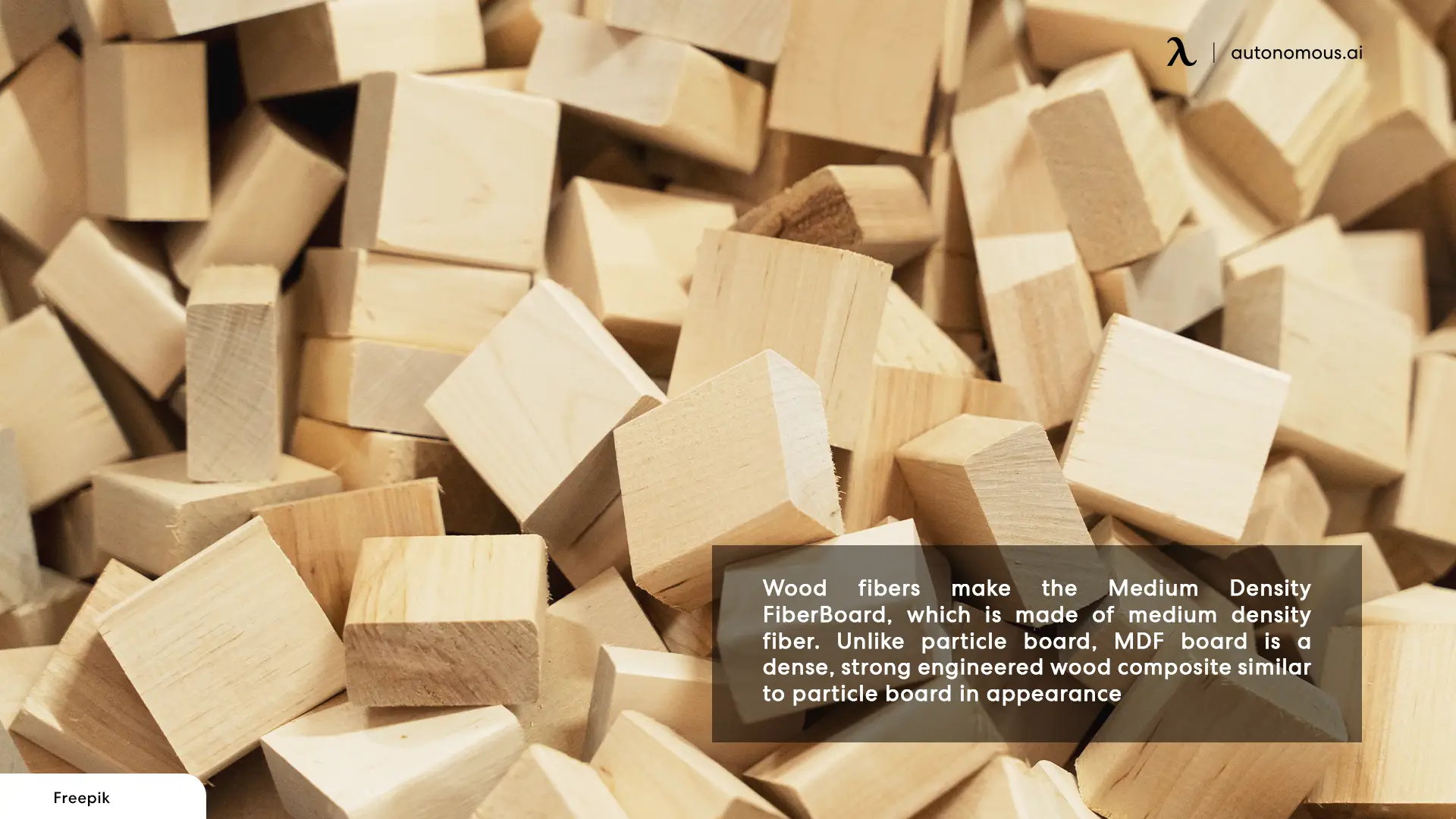
What is a Particle Board?
The engineered wooden product known as particleboard is also called chipboard or low-density fiberboard. Using a synthetic resin or another binder material, sawdust, wood chips, and sawmill shavings are bonded together to make plywood. Another good substitute for plywood is MDF or particle board. Check the next section to view the differences between particle board vs. MDF.
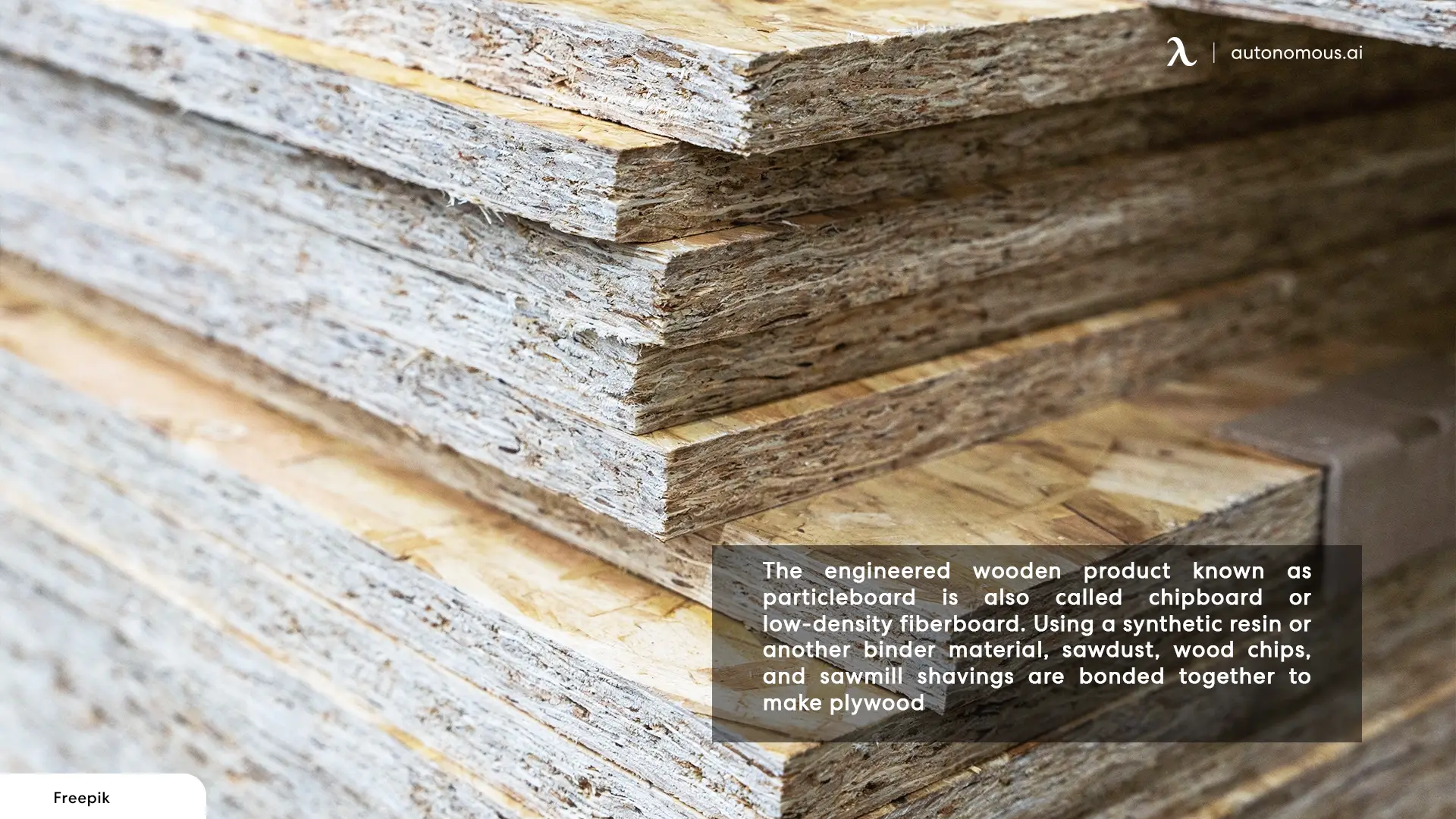
Difference Between MDF and Particle Board
| Feature | Particleboard | MDF |
| Density | Less density | Higher density |
| Look | Slightly textured, rough surface owing to wood chips | Smooth top surface owing to finer, consistently-sized wood grains |
| Durability | Less durable | Durable |
| Strength | Strong | Stronger |
| Weight | Lightweight | Heaver |
| Water/moisture resistance | Low | High |
| Price | Cheaper | Pricey |
| Lifespace | Over 5 years or more | Up to ten years |
| Texture | Lacks characteristic wood markings | Realistic finish |
| Cosmetic additions | Easy to drill, cut, paint, and glue. Hold screws | Easy to cut. Hold nails screws |
Top Tabletop Material Types: Popular Choices for Furniture Design
Here are some popular tabletop material types commonly used in furniture manufacturing:
- Wood - Natural wood, such as oak, maple, walnut, and pine, is a popular choice for tabletops due to its warmth, durability, and timeless aesthetic.
- Laminate - Laminate tabletops are made of layers of paper or fabric infused with resin, making them durable, easy to clean, and available in a wide range of colors and patterns.
- Glass - Glass tabletops are sleek, modern, and versatile, offering a clean and transparent look that can complement various styles of furniture.
- Metal - Metal tabletops, such as those made of steel or aluminum, are known for their durability and industrial aesthetic, making them popular in modern and contemporary furniture designs.
- Engineered wood - Engineered wood, such as plywood or medium-density fiberboard (MDF), is made by combining wood fibers with adhesives, resulting in a stable and durable material that can be painted or veneered for a polished look.
- Stone - Stone tabletops, such as those made of granite, marble, or quartz, are known for their natural beauty, durability, and unique patterns, making them a popular choice for high-end furniture.
- Acrylic - Acrylic tabletops are lightweight, durable, and available in various colors and finishes, making them a trendy choice for modern and contemporary furniture designs.
- Concrete - Concrete tabletops are durable, heavy, and offer an industrial, modern look, making them a popular choice for contemporary and minimalist furniture designs.
Note: The popularity of tabletop material types may vary depending on the region, style, and preferences of consumers.
Choosing the Perfect Material for Your Desk Top: Factors to Consider
When choosing a material for an office desk top, there are several factors to consider, including:
Durability
Desks are often subjected to regular use, so it's important to choose a material that can withstand daily wear and tear. Materials like solid wood, metal, or stone are known for their durability and can withstand heavy use over time.
Functionality
Consider the intended use of the desk. If it will be used for tasks that involve heavy objects or tools, a sturdy material like metal or engineered wood may be more suitable. For lighter tasks, materials like laminate or acrylic may be sufficient.
Aesthetic Appeal
The material you choose should also align with your desired aesthetic for the desk and the overall style of the room. For example, wood can add warmth and natural beauty, while glass or metal can provide a sleek and modern look.
Maintenance
Consider the level of maintenance required for the material. Some materials may require regular cleaning or polishing, while others may be low-maintenance and easy to clean, like laminate or metal.
Budget
Your budget will also play a role in the material you choose. Materials like solid wood or stone may be more expensive compared to laminate or engineered wood.
Weight
Consider the weight of the material, especially if you need to move or transport the desk. Materials like metal or laminate are generally lighter compared to solid wood or stone.
Environmental Impact
If environmental sustainability is a priority, you may want to consider materials that are eco-friendly, such as reclaimed wood or materials with high recyclability
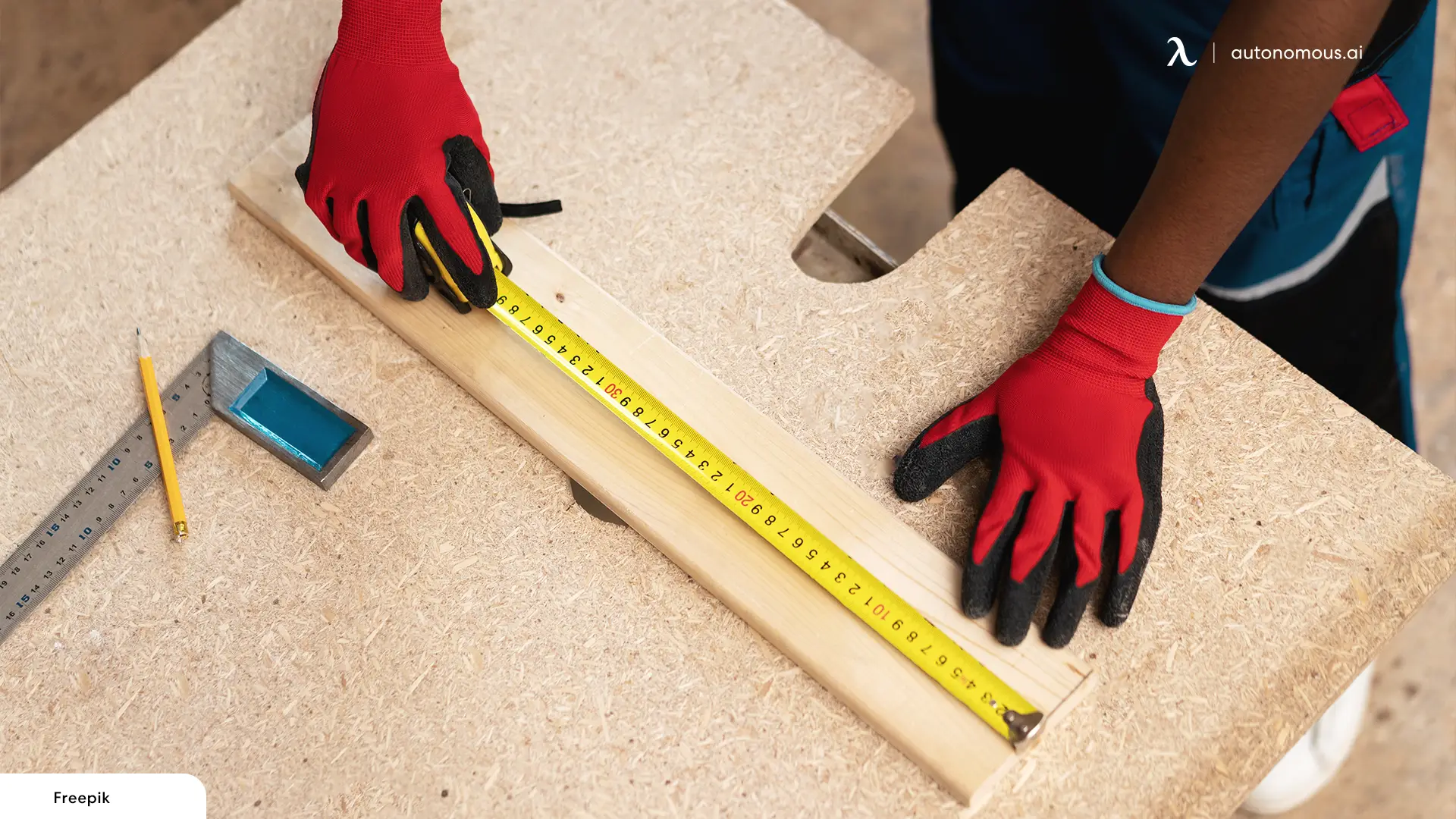
FAQs
Is particle board strong?
Particleboard has some strength, but it's nowhere near as strong as MDF or plywood. In order to avoid these problems, particleboard bamboo desktop surfaces have a weight limit and must be handled carefully. Moreover, particle boards are more susceptible to expansion and distortion when exposed to humidity and moisture.
Wood waste can also be used to make particleboard, another inexpensive product. A wide range of low-end home décor furniture is made from particleboard. Moreover, particleboards are often used to make MDF computer desks as well.
While particleboard is easy to drill into, it is also prone to tearing out over time. A particle board office desk top is difficult to shape and mold since it tends to break or chip easily. Veneer and laminate materials easily stick to the substrate’s flat, smooth wood desk top surface. Acoustic boards offer soundproof properties, and that's why they are used in auditoriums, lecture halls, and theaters.
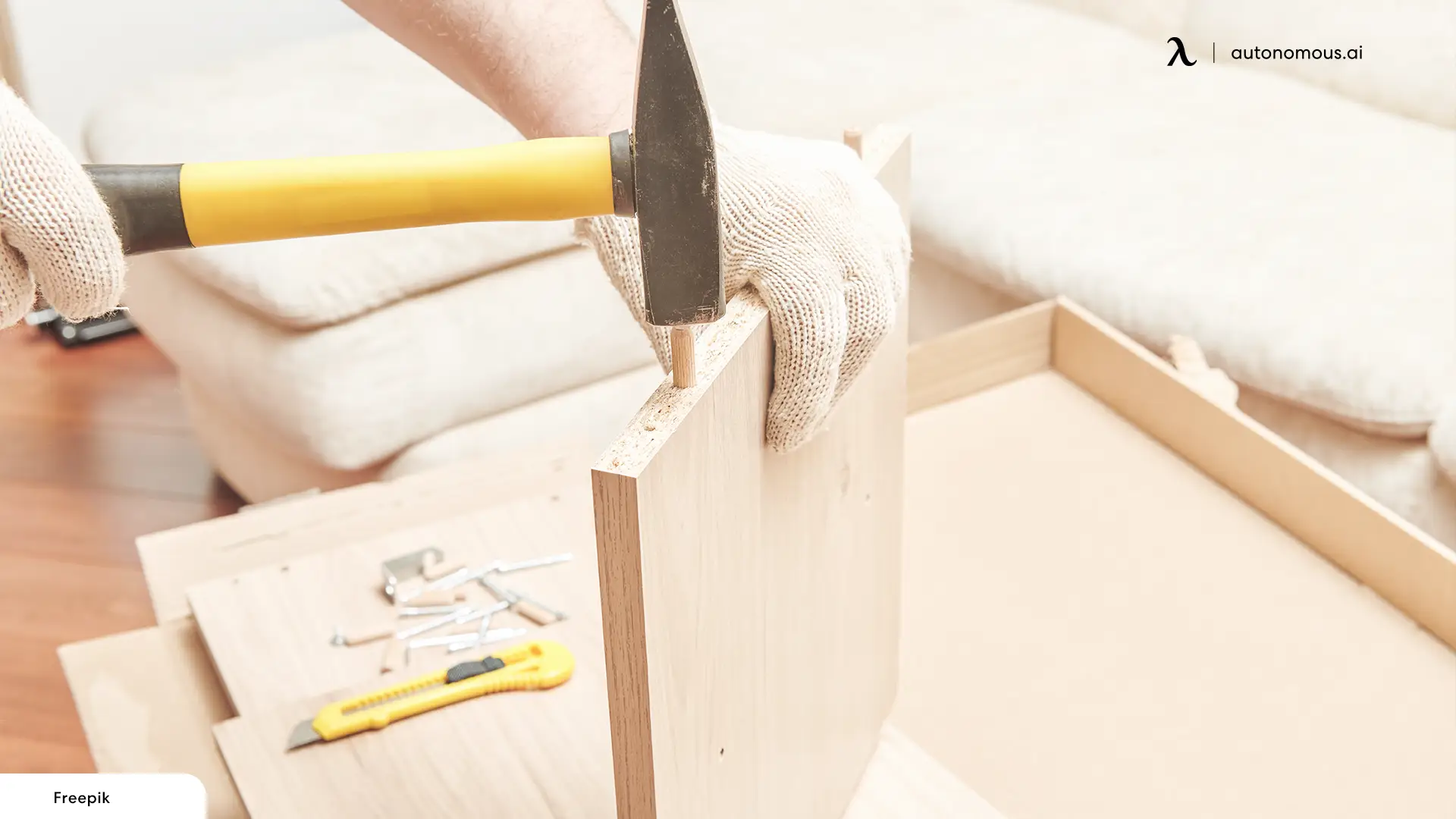
How strong is a particle board?
Moisture and humidity do not stand up to it very well. Consequently, particle boards have relatively high moisture absorption rates. These boards expand when exposed to moisture. Particleboards are not eco-friendly since they are manufactured using a resin that can be toxic to people. Without taking care of it, you cannot expect particleboard to last indefinitely. Overuse and poor maintenance can cause the board to develop damage, such as:
- Wood fragments that begin to crumble
- Swelling when exposed to water
- Fasteners, screws, hinges, and other metal fixtures that loosen
- Edges and corners that chip off
- Veneer finishing that can scratch easily or peel off to reveal particle board underneath
Is MDF a Particle Board?
Compressed sawdust and adhesive materials make particle board, which is used to make furniture and solid wood desktops and is usually finished with veneer or laminate. The material will not warp or bow but may swell if exposed to water. Likewise, MDF is made with fine wood fibers and has similar finishes and applications as plywood. MDF is a type of particleboard that has been advanced. Like particleboard, MDF can absorb water unless it is sealed at the edges and sides with paint or primer.
MDF is an engineered wood composite similar to particle board but much more dense and strong. MDF has no wood grains because it is composed of small wood fibers. Moreover, MDF has no voids due to its hard pressing at high temperatures, as you find in particle board. This article lists all of the visible differences between particle board and MDF. The cost of MDF is usually lower than plywood, and it is relatively consistent throughout so that edges appear smooth and there will be no voids or splinters.
Stay connected with us!
Subscribe to our weekly updates to stay in the loop about our latest innovations and community news!
Interested in a Link Placement?
Spread the word
.svg)
.svg)



/https://storage.googleapis.com/s3-autonomous-upgrade-3/production/ecm/230914/bulk-order-sep-2023-720x1200-CTA-min.jpg)

/https://storage.googleapis.com/s3-autonomous-upgrade-3/static/upload/images/new_post_author/admin-1.png)